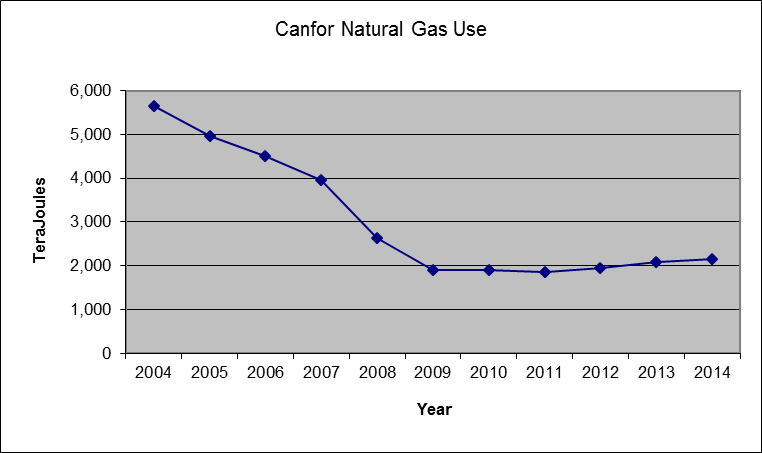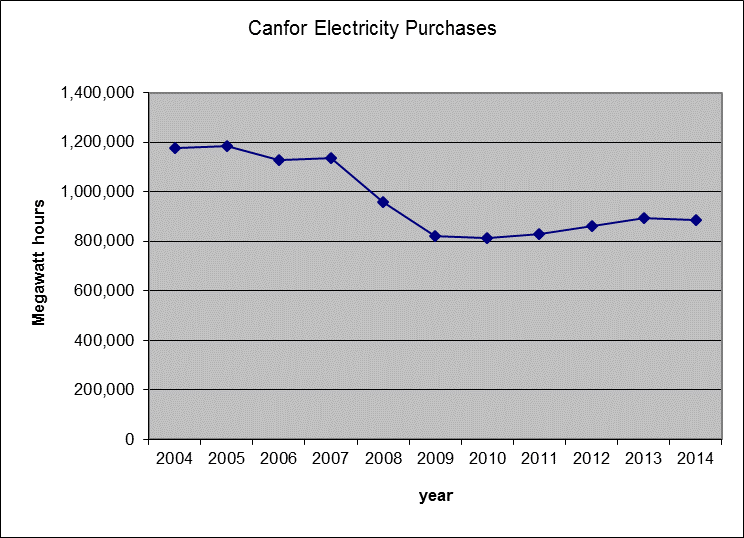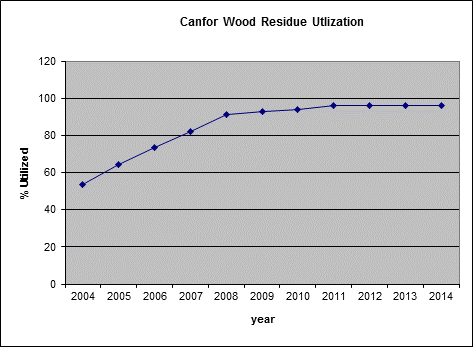Energy Management
To date, our energy management activities are saving 10,400 MWh/year – enough energy to power 730 homes each year. These savings primarily come from high-efficiency lighting and compressed air projects. We announced a partnership with Pacific BioEnergy in 2014 to develop pellet plants in Chetwynd and Fort St. John. The Chetwynd plant will include an organic rankine cycle (ORC) generator as part of the process, co-funded by BC Hydro under its Load Displacement program. The ORC component will generate an estimated 21,000 MWh/year of electricity, or enough energy to power 1,470 homes and make the Chetwynd pellet plant self-sufficient in renewable heat and electricity.
Our energy savings to date have primarily come through capital projects co-funded by BC Hydro, and through the installation of high-efficiency equipment. We are also on the leading edge of innovation, working with BC Hydro on market transformation projects. We are piloting a VFD (variable frequency drive) power regeneration unit that turns wasted heat energy from an industrial process back into useful electrical power. We are part of a BC Hydro pilot to get next level electricity metering into industrial facilities, and installed a site-wide monitoring system at our Houston division in 2014. This allows us to use real-time data in our operational decisions so we can identify new energy-saving opportunities.
Our Energy Manager, a position based in Prince George and co-funded by BC Hydro, has a specific focus on developing these opportunities and achieving energy cost reduction for our wood products manufacturing facilities. This includes developing strategic plans for energy reduction, both small and large scale. Our Sustainable Energy Management Plan (SEMP) identifies opportunities for both hard-wired energy use reductions and demand side management. We look for energy efficiency in capital projects, and we make sure employees realize they can save energy through simple actions. Our SEMP considers the energy resources we use, and asks the fundamental question of where we can gain efficiency.
We did not meet the target we established in 2012 of reducing the electricity used per thousand board feet of production at all our facilities by 10% over the next two years in part because recovering markets led to longer operating hours. But we are making progress at all of our facilities, and have re-established our targets for 2015 and 2016.

Natural gas was up slightly due to inclusion of a full year of operation of our Elko Sawmill.

Electricity purchases dropped slightly because of the sale of the Daaquam mill, and implementation of a number of energy conservation measures.

We are close to 100% utilization, and completion of the Chetwynd and Fort St. John pellet plants will bring us even closer.